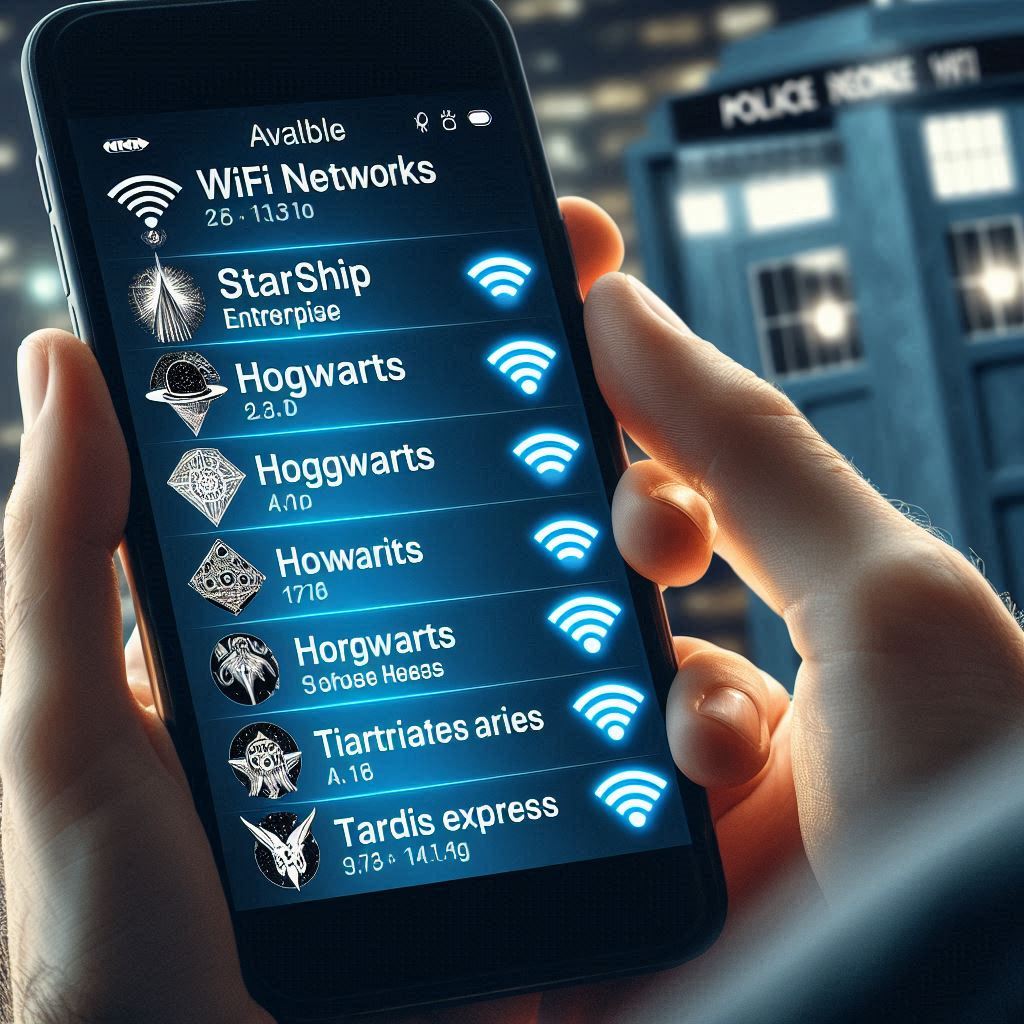Understand the best criteria you can use to choose the best Wi-Fi for your internet needs.
Demystifying the Magic: What Makes a Good Wi-Fi Network.
In today's hyper-connected world, a dependable Wi-Fi network is no longer a luxury; it's an essential utility. From seamlessly streaming high-definition videos to attending work video conferences and staying connected with loved ones on social media, our daily digital lives hinge on a strong and reliable Wi-Fi connection. However, navigating the world of Wi-Fi routers, internet service providers (ISPs), and technical jargon can feel overwhelming. Fear not, tech-savvy user! This comprehensive guide will unveil the secrets behind a good Wi-Fi network, empowering you to create a connection that perfectly suits your browsing needs.
Understanding Your Needs: The Foundation for a Strong Network
Before delving into the world of routers and internet plans, it's crucial to analyze your browsing habits. This self-assessment will guide you towards the optimal setup:
- Frequency of Use: How often do you utilize the internet? Are you a casual browser checking emails occasionally, or a heavy user streaming videos and online gaming for extended periods?
- Number of Devices: How many devices will be connected to your Wi-Fi network simultaneously? This includes smartphones, laptops, tablets, smart TVs, gaming consoles, and any other internet-connected devices you own.
- Types of Activities: What kind of online activities do you engage in most? Are you a video streaming enthusiast, a social media butterfly, or a remote work warrior attending video conferences regularly?
- Download and Upload Speeds: Do you frequently download large files or upload content online? Understanding your download and upload speed requirements is crucial.
The Building Blocks: Unveiling Wi-Fi Router Specs
Once you have a grasp of your browsing habits, it's time to explore the world of Wi-Fi routers. These devices act as the central hub, distributing the internet signal to all your connected devices. Here are some key router specifications to consider when making your choice:
- Wireless Standards: Wi-Fi routers operate on different wireless standards, each offering varying speeds and capabilities. Common standards include 802.11ac (Wi-Fi 5) and the latest 802.11ax (Wi-Fi 6). If speed and future-proofing your network are priorities, consider Wi-Fi 6 routers, although they might come at a slightly higher cost.
- Dual-Band vs. Tri-Band Routers: Dual-band routers operate on two frequencies - 2.4 GHz and 5 GHz. The 2.4 GHz band offers wider range but slower speeds, while the 5 GHz band provides faster speeds but with a shorter range. Tri-band routers add a third dedicated 5 GHz band, improving overall network performance and reducing congestion.
- Number of Antennas: The number of antennas on a router generally correlates with its range and signal strength. More antennas often translate to a wider Wi-Fi coverage area, especially beneficial for larger homes or buildings with multiple floors.
- Security Features: Look for routers with robust security features like WPA2 or WPA3 encryption to safeguard your network from unauthorized access and potential security threats.
Beyond the Router: Choosing the Right ISP
While the router plays a vital role in distributing the Wi-Fi signal, the real source of your internet connection comes from your ISP. Here's what to consider when choosing an ISP:
- Internet Speed Tiers: ISPs offer different internet speed packages, typically measured in Mbps (megabits per second). Higher Mbps translates to faster download and upload speeds. Consider your browsing needs – casual browsing might require a lower Mbps package, while heavy online gaming or 4K video streaming demands a higher Mbps tier.
- Data Caps and Throttling: Some ISPs impose data caps, limiting the amount of data you can use in a month. Exceeding the cap can result in overage charges or throttling, where your internet speed is deliberately slowed down. Analyze your data usage patterns and choose an ISP with a data cap that aligns with your needs.
- Customer Service: Reliable customer service is crucial when troubleshooting internet issues. Research an ISP's reputation for customer support and choose one known for prompt and efficient assistance.
- Promotional Offers: Many ISPs offer introductory discounts and bundled packages that might include TV service or phone plans alongside your internet service. Explore these offers and choose the one that best suits your needs and budget.
Matching Your Needs with the Perfect Setup
Understanding your browsing habits and the components of a good Wi-Fi network are the first steps. Now, let's translate this knowledge into practical choices to ensure your setup perfectly aligns with your needs:
Light Browsing:
- Router: For casual web browsing, checking emails, and occasional standard definition (SD) video streaming, a basic dual-band router with an AC1200 or AC1750 standard is sufficient. These routers offer adequate speeds and coverage for light internet usage.
- ISP: Look for internet plans with download speeds around 25-50 Mbps. Many ISPs offer introductory discounts for new customers, so keep an eye out for deals.
- Additional Considerations: Prioritize routers with good range coverage for your home size and prioritize security features like WPA2 encryption.
Moderate Browsing:
- Router: If you regularly stream videos in high definition (HD), participate in video calls, and connect several devices simultaneously, consider a dual-band router with an AC1900 or AC2200 standard. These offer better speed and performance compared to AC1200 routers. Additionally, look for features like beamforming technology that focuses the Wi-Fi signal towards connected devices for improved performance.
- ISP: Opt for an ISP plan with download speeds around 50-100 Mbps to handle these activities comfortably. Packages with unlimited data or high data caps are recommended if you frequently stream content.
- Additional Considerations: Consider parental controls on your router to restrict website access for children and manage screen time. Explore guest network functionality for secure Wi-Fi access for guests without compromising your main network.
Heavy Browsing and Online Gaming:
- Router: For heavy internet users who engage in online gaming, stream 4K content, and frequently download large files, a powerful router with the latest Wi-Fi 6 (802.11ax) standard is recommended. These routers offer significantly faster speeds, improved network efficiency for handling numerous devices, and lower latency ideal for online gaming.
- ISP: Pair this setup with a high-speed internet plan offering download speeds exceeding 100 Mbps and consider gigabit internet (download speeds exceeding 1 Gbps) for truly unleashing the potential of your Wi-Fi 6 router. Look for plans with unlimited data or very high data caps to avoid throttling during heavy internet usage.
- Additional Considerations: Explore tri-band routers with multiple antennas for wider coverage and reduced congestion, especially in larger homes. Invest in wired ethernet connections for desktops or gaming consoles for the most stable and high-bandwidth connection for these devices.
Advanced Needs:
- Router: For professionals working with large data files, households with a multitude of internet-connected smart devices, or avid gamers, exploring mesh Wi-Fi systems might be ideal. Mesh systems consist of multiple units strategically placed throughout your home, creating a blanket of strong Wi-Fi coverage and eliminating dead zones. These systems often come with user-friendly apps for managing your network and prioritizing devices.
- ISP: Research gigabit internet packages (download speeds exceeding 1 Gbps) to truly handle heavy internet traffic seamlessly when using a mesh Wi-Fi system. Look for plans with unlimited data or data caps that align with your expected usage.
- Additional Considerations: Consider features like Quality of Service (QoS) on your mesh Wi-Fi system to prioritize bandwidth for specific devices or activities, ensuring a smooth online experience even during peak usage times.
Remember:
- Future-Proofing: If you anticipate your internet usage increasing in the future, consider investing in a router with the latest Wi-Fi standard and features to avoid needing an upgrade sooner rather than later.
- Budget: Set a realistic budget for your router and ISP plan. While high-end options offer superior performance, affordable routers and mid-tier ISP plans can be sufficient for light to moderate browsing needs.
The Importance of Optimization: Beyond Hardware
Once you've chosen the perfect setup for your needs, don't stop there. Optimizing your Wi-Fi experience plays a crucial role in maximizing performance and ensuring a smooth browsing experience. Here are some essential tips:
Strategic Router Placement:
- Central Location: Position your router centrally within your home to ensure the Wi-Fi signal reaches all corners equally.
- Minimize Obstructions: Avoid placing your router near walls, furniture, and electronic devices that can weaken the signal. Opt for an elevated and clutter-free location.
Regular Firmware Updates:
- Update your router's firmware regularly to address security vulnerabilities, patch bugs, and improve performance.
Manage Connected Devices:
- Disconnect unused devices from your Wi-Fi to reduce network congestion and improve overall speed
Prioritize Wired Connections
While Wi-Fi offers convenient wireless connectivity for our laptops, smartphones, and tablets, it's not always the ideal solution for all devices. Here's why prioritizing wired connections is crucial for specific scenarios and how to implement it:
Advantages of Wired Connections:
- Superior Speed and Stability: Wired ethernet connections offer significantly faster and more stable data transfer compared to Wi-Fi. This is because wired connections use a dedicated cable, eliminating interference and fluctuations often experienced with wireless signals.
- Lower Latency: Latency refers to the time it takes for data to travel between devices. Wired connections offer significantly lower latency than Wi-Fi, making them ideal for applications where real-time responsiveness is critical.
- Reduced Network Congestion: By offloading data traffic from your Wi-Fi network, wired connections can improve overall network performance for other devices that rely on Wi-Fi.
Ideal Devices for Wired Connections:
- Desktops: For desktops used for work, gaming, or downloading large files, a wired ethernet connection is highly recommended. This ensures a consistent and high-bandwidth connection for optimal performance.
- Gaming Consoles: Online gaming demands a stable and low-latency connection to avoid lag and ensure a smooth gaming experience. A wired ethernet connection is the best choice for serious gamers.
- Smart TVs: Streaming high-definition or 4K content on a smart TV requires a strong and reliable internet connection. A wired ethernet connection eliminates buffering issues and ensures a seamless viewing experience.
Implementing Wired Connections:
- Ethernet Cables: You'll need an ethernet cable (also known as a LAN cable) to connect your device to your router's ethernet port. These cables come in different lengths and are readily available at electronics stores.
- Router Ports: Most routers have multiple ethernet ports available for wired connections. Simply connect one end of the ethernet cable to your device's ethernet port and the other end to an available ethernet port on your router.
- Device Settings: Some devices might require you to adjust network settings to prioritize wired connections over Wi-Fi. Consult your device's user manual for specific instructions.
Additional Considerations:
- Aesthetics: Running ethernet cables throughout your home might not be aesthetically pleasing. Consider cable management solutions like cable channels or clips to conceal the cables and maintain a clean look.
- Powerline Adapters: If running ethernet cables throughout your home is impractical, consider powerline adapters. These adapters utilize your existing electrical wiring to create a wired ethernet connection at any power outlet.
By prioritizing wired connections for specific devices, you can significantly enhance your Wi-Fi network's overall performance and ensure a smooth and reliable online experience for all your browsing needs.
Conclusion
In today's digital age, a well-functioning Wi-Fi network is no longer a luxury, but a necessity. By understanding your browsing habits and the components that make up a good Wi-Fi network, you can create a personalized setup that caters to your specific needs. From choosing the right router and ISP plan to optimizing your network through strategic placement, firmware updates, and prioritizing wired connections, this guide has equipped you with the knowledge and tools to navigate the world of Wi-Fi with confidence. Remember, a strong and optimized Wi-Fi network is an investment in your digital well-being, allowing you to work, stream, game, and connect seamlessly. So, take control of your Wi-Fi experience and unlock its full potential for a truly enriching online world.


























